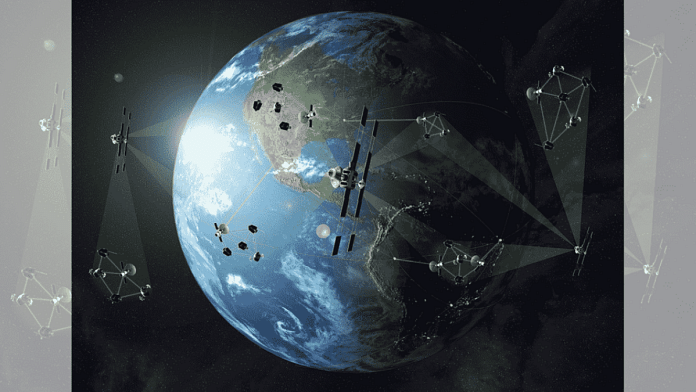Bengaluru: A new report by the World Economic Forum (WEF) released Monday projects that the global space economy will be worth $1.8 trillion by the year 2035, almost rivaling the size of the world semiconductor industry.
The report — titled ‘Space: The $1.8 Trillion Opportunity for Global Economic Growth’, authored by the WEF and consulting firm McKinsey & Co — states that the growth will be prompted by the ubiquity of space technologies, such as navigation satellites, lower costs, and easier access to these technologies.
“Space technologies are delivering greater value to a more diverse set of stakeholders than ever before, including in industries as varied as food and beverage, retail, consumer goods and lifestyle, supply chain and transportation, and even climate disaster mitigation,” said Sebastian Buckup, member of the WEF’s executive committee, in an accompanying statement. “As costs reduce and accessibility rises, these technologies could reshape whole industries, and have as much impact on business and society as smartphones or cloud computing.”
Also read: India’s space economy can take flight with 100% FDI, but it needs a law to lift-off
Key findings
The report finds that space technologies are becoming increasingly prevalent in every aspect of daily life for people across the globe. As time progresses, the commercial innovation in these fields go up, leading to diversification of investment and applications.
The report focuses on four key findings.
It concludes that the industry of space and access to it will become one of the biggest parts of the global economy, owing to the use of space- and satellite-enabled technologies widely. This primarily includes navigation and communication, which already has become widespread in nearly every industry. Further, Earth observation satellites and the data coming from them are expected to aid many industries.
The report also talks about other industries and companies that have come to be thanks to satellite technologies, such as telecommunication and ride-hailing apps, which work on satellite technology.
As for the major part of the economy of the growing space industry, the WEF report states that more than 60 percent of increase in space economy would come from other industries relying on space economy, such as food and beverage, state-sponsored defence and weaponry, consumer goods and lifestyle, and more.
The report concludes that beyond revenue generation, technologies enabled by space industry will play an extremely crucial role in mitigating global challenges in a warming world, such as disaster warning systems, climate monitoring, Earth observation for resource tackling, and more.
Drivers of space economy
The report outlines how space technologies are going from “niche to ubiquitous” thanks to four main drivers.
The first is the rapid and large drop in launch costs of satellites and rockets, which has fallen 10-fold over the past 20 years. The price of data and connectivity is also expected to drop by at least 10 percent as demand increases by 60 percent by 2035, the report says.
Another driver is commercial innovations, such as improvement in resolution of Earth-observation technology, which in turn drives down the price to access the said technologies.
Citing the growth of investors in the space sector, the report points out that there is a rapid diversification of space-based technologies and activities such as space tourism.
Lastly, cultural awareness and general enthusiasm for space in recent days is also a major driver of interest in space for future generations.
Further, the authors outline that various industries are both drivers and beneficiaries of growth and diversification by improving three key aspects of space tech: harmonisation, increasing ease of usability and accessibility, and education and awareness of growing tech.
(Edited by Himansha Baweja)
Also read: India’s first space station and human mission to Moon: what ISRO is planning after Gaganyaan



